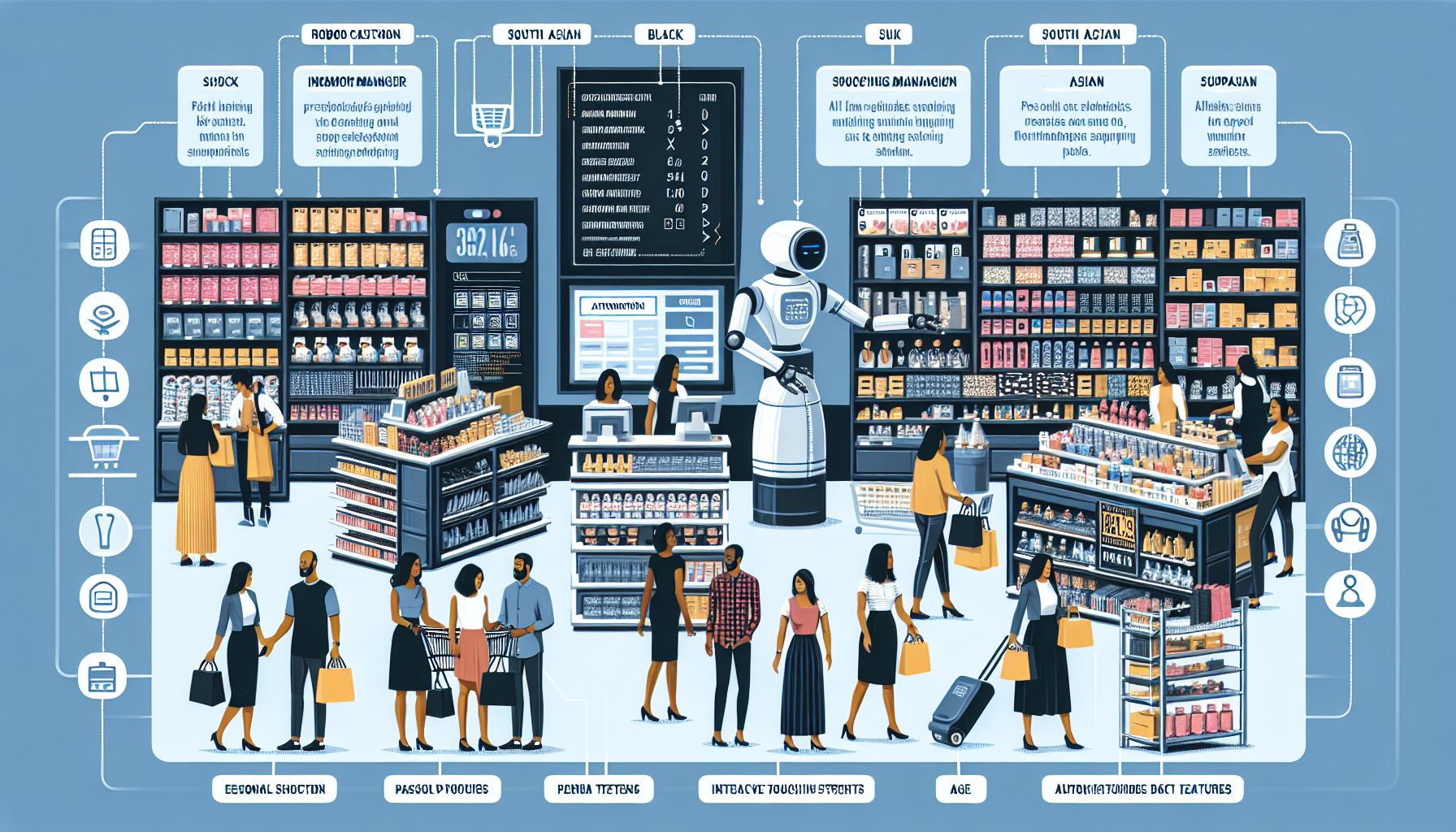Automation in Retail: Improving Inventory Management and Customer Insights
1. The Landscape of Retail Automation
With retail evolving rapidly due to technological advancements, automation has emerged as a key driver of efficiency and profitability. Modern retailers are leveraging automation not only to optimize inventory management but also to gain profound insights into customer behavior. This article delves into the transformative effects of automation in retail, particularly focusing on inventory management and customer insights.
2. Understanding Inventory Management
Inventory management refers to the processes involved in ordering, storing, tracking, and controlling inventory. It is a critical component for retailers to maintain operational efficiency, minimize costs, and ensure customer satisfaction.
2.1 Traditional Inventory Challenges
Historically, retailers grappled with manual inventory processes, often leading to errors, stockouts, or excess stock. Inaccurate inventory data hinders sales forecasting and can disrupt the supply chain, ultimately impacting customer experience.
2.2 The Role of Automation in Inventory Management
Automation addresses these challenges through technologies such as Artificial Intelligence (AI), the Internet of Things (IoT), and Machine Learning (ML). These systems streamline inventory tracking, optimize stock levels, and enhance demand forecasting.
-
Real-time Inventory Tracking: Automated systems provide real-time visibility into stock levels across all locations, enabling retailers to respond swiftly to changes in demand.
-
Predictive Analysis: Advanced algorithms analyze historical sales data, seasonal trends, and consumer behavior to forecast future demand accurately. This predictive capability minimizes the risk of overstocking or stockouts.
-
Automated Reordering Systems: Retailers can set thresholds that trigger automatic reordering of products for optimal replenishment when stock levels drop below predefined limits.
-
Enhanced Supply Chain Coordination: Automation facilitates better coordination with suppliers, improving lead times and ensuring timely delivery of products.
3. The Impact of IoT on Inventory Management
The Internet of Things (IoT) is transforming inventory management through connected devices and sensors. Smart shelves, RFID tags, and IoT-enabled devices help retailers monitor inventory in real-time.
-
Smart Shelves: These shelves can detect stock levels and notify staff when items need replenishing. This minimizes the time staff spend on inventory checks, allowing them to focus on customer service.
-
RFID Technology: Radio Frequency Identification (RFID) tags streamline the tracking process. Retailers gain accurate information about product movement, allowing for effective inventory auditing and reduced shrinkage.
4. Customer Insights Through Automation
Automation not only enhances inventory management but also plays a crucial role in capturing and analyzing customer data. Understanding customer behavior is paramount for retailers aiming to tailor their offerings and improve the shopping experience.
4.1 Data Collection Methods
Automation streamlines data collection methods, enabling retailers to gather insights from various sources:
-
Point of Sale (POS) Systems: Modern POS systems capture transaction data, including customer purchases, preferences, and behaviors, allowing for sophisticated customer profiling.
-
Mobile Apps and Websites: Retailers can track online customer behavior through integrated apps and e-commerce sites. This data includes browsing patterns, cart abandonment rates, and purchase history.
-
Social Media Analytics: Social media platforms provide valuable insights into customer sentiment and engagement, informing marketing strategies.
4.2 Analyzing Customer Data
Once data is collected, automation tools equipped with AI and ML offer comprehensive analysis capabilities.
-
Customer Segmentation: Automated algorithms can categorize customers based on demographics, purchasing habits, and preferences. This segmentation enables personalized marketing strategies and enhances customer relations.
-
Behavioral Analytics: Retailers can determine how customers interact with products and services, allowing for strategies that enhance engagement and retention.
-
Customer Lifetime Value (CLV): Analyzing purchasing patterns helps calculate CLV, enabling retailers to focus on high-value customers and tailor their marketing efforts accordingly.
5. Personalization through Automation
Retailers are leveraging insights drawn from data analytics to create personalized shopping experiences, increasing customer satisfaction and loyalty.
-
Targeted Promotions: Automated systems enable retailers to send personalized offers based on past purchases and customer preferences.
-
Product Recommendations: Algorithms generate personalized product suggestions, akin to the recommendation engines used by major e-commerce platforms.
-
Dynamic Pricing: Automation allows retailers to adjust prices in real-time based on demand, competition, and customer behavior, enhancing sales opportunities.
6. Enhancing Customer Experience with Chatbots
Chatbots powered by AI have revolutionized customer service in retail. They provide real-time assistance to customers, answering queries and guiding them through the purchasing process.
-
24/7 Availability: Chatbots operate round the clock, providing customers with immediate responses anytime.
-
Handling FAQs: They efficiently manage frequently asked questions about products, return policies, and shipping, reducing the workload on human staff while delivering instant customer support.
-
Feedback Collection: Automated systems can gather customer feedback after purchases, providing valuable insights into satisfaction levels and areas for improvement.
7. Challenges and Considerations
While automation presents numerous benefits, retailers must be mindful of potential challenges.
-
Initial Investment: Implementing automation technologies can require a significant upfront investment that small to medium-sized retailers may find daunting.
-
Data Privacy Concerns: With increased data collection comes the responsibility of ensuring customer data is protected. Retailers must comply with data privacy regulations such as GDPR.
-
Technology Adoption: Employees may require training to adapt to new automated systems, necessitating a thoughtful approach to change management.
8. Future Trends in Retail Automation
The future of retail automation is promising, with advancements shaping how retailers operate:
-
Increased AI Integration: AI will continue to develop, providing deeper insights and streamlining operations.
-
Augmented Reality (AR): AR will enhance the online shopping experience and allow customers to visualize products before purchasing.
-
Blockchain for Supply Chain Transparency: Blockchain technology can enhance supply chain transparency and traceability, adding another layer of reliability for consumers.
-
Omni-channel Strategies: Automation will play a vital role in seamless omni-channel experiences, allowing customers to shop effortlessly across various platforms.
9. Conclusion
The incorporation of automation in inventory management and customer insights is reshaping retail, enhancing efficiency, personalization, and customer engagement. As technology continues to evolve, retailers must remain adaptable and innovative, harnessing automation to meet changing consumer demands and pave the way for a successful future in retail.


